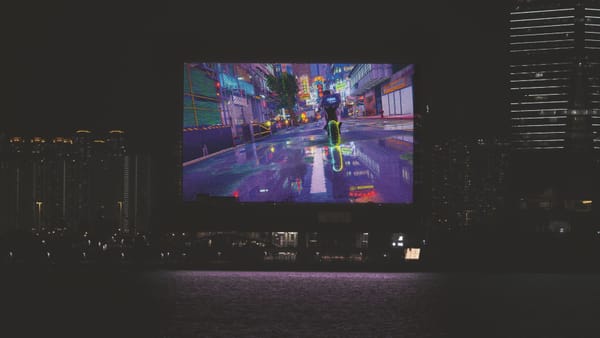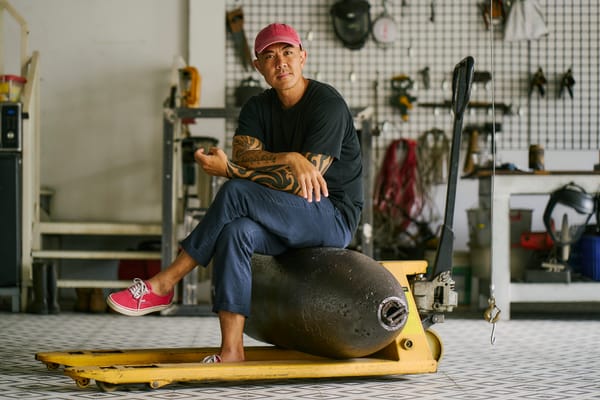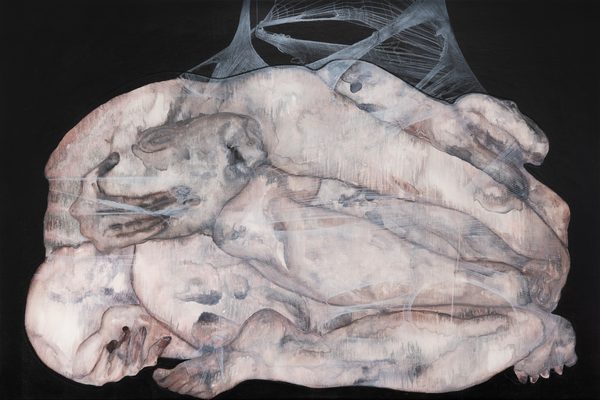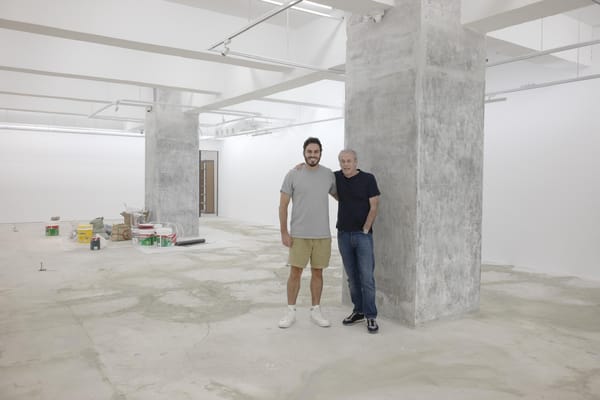People
Curator Conversations: Gridthiya Gaweewong
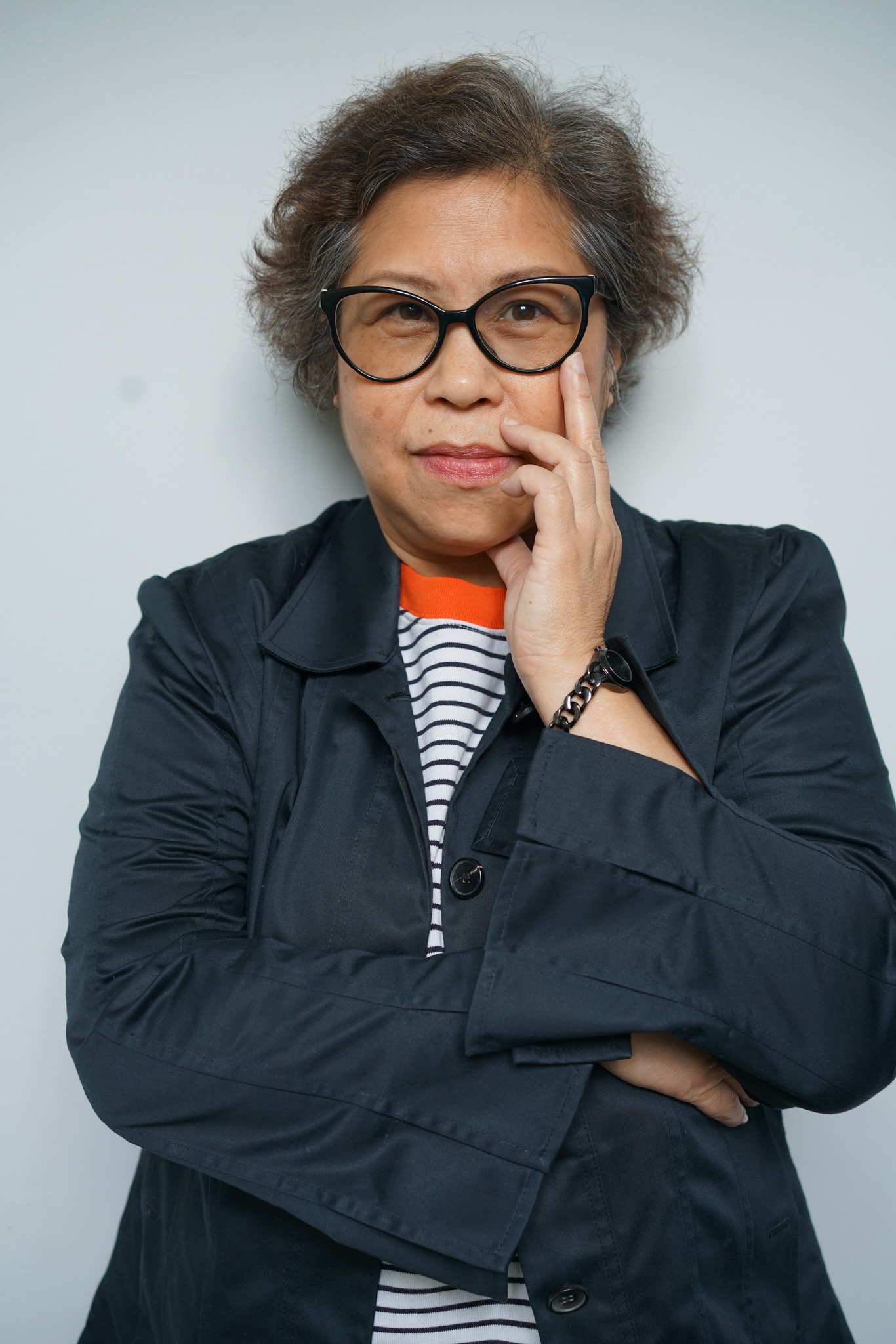

This conversation is part of a series between Caroline Ha Thuc and curators across Asia Pacific. Gridthiya Gaweewong is a curator and artistic director at the Jim Thompson Art Centre in Bangkok since 2007. Gaweewong has curated various regional and international exhibitions at the Tokyo Opera City Gallery and Japan Foundation, MAIIAM Contemporary Art Museum in Chiang Mai, co-curated with regional curators at Haus Der Kulteren der Welt in Berlin, the 4th Bangkok Experimental Film Festival. She also served on the curatorial team for the 12th Gwangju Biennale. In 2023, Gaweewong served as the co-artistic director of the Thailand Biennale, Chiang Rai 2023.
You cofounded the arts organization Project 304, an alternative and experimental arts space that you worked in between 1996 and 2003. Had you already begun curating exhibitions, or was the organization more like a collective mode of working?
Project 304 began with a committee system that consisted of members such as Montien Boonma, Kamol Phaosavasdi, Chatchai Puipia, Prapon Kumjim and Apichatpong Weerasethakul. For the visual arts, we made our selection from artists’ proposals, while for films, I co-curated the first experimental film festival with Apichatpong Weerasethakul. Gradually, I started to curate some group shows of young artists at another university gallery. It was thus a combination of collective and solo projects.
In the nineties, the term “curator” was quite new and alien to contemporary art. We call it “Phan Ta Rak” in Thai, which literally means the “caregiver of artifacts” in an archaeology museum. It was used in the context of traditional art history and archaeology, not in the modern and contemporary art context.
Why and how did you feel the need to embark on a curating journey, then?
While working at the Dialogue Gallery in 1991, I saw Japanese curators conducting research trips and site visits for the Japan Foundation Asia Center Exhibition. Montien Boonma told me that we needed more contemporary art curators in Thailand, and he recommended that I pursue my studies abroad. The urgency kicked in again when I visited museums and art spaces in Australia and the US, and I had an urge to be part of that world. It was a decisive moment for me, which drove me to pursue my career as a professional curator.
Today, how would you define your role as a curator?
In the past, I was more like a producer and exhibition-maker than a context provider. My main goals were working with artists from scratch and helping them realize their dreams, which synchronizes with my interests. Right now, I curate fewer shows, but I am interested in facilitating, building capacity, and transferring knowledge to the next generation.
You have participated in many collaborative projects. Most of the time, you co-create exhibitions and work with other curators or artists. Do you see curating as a collective enterprise?
Curating is a lonely job—the more you want to connect with people and society, the more lonely and isolated you are. Yet, it is impossible to do this task alone. I need to have someone to talk to, to fight with, to agree and disagree with. Indeed, it is a totally collective enterprise.
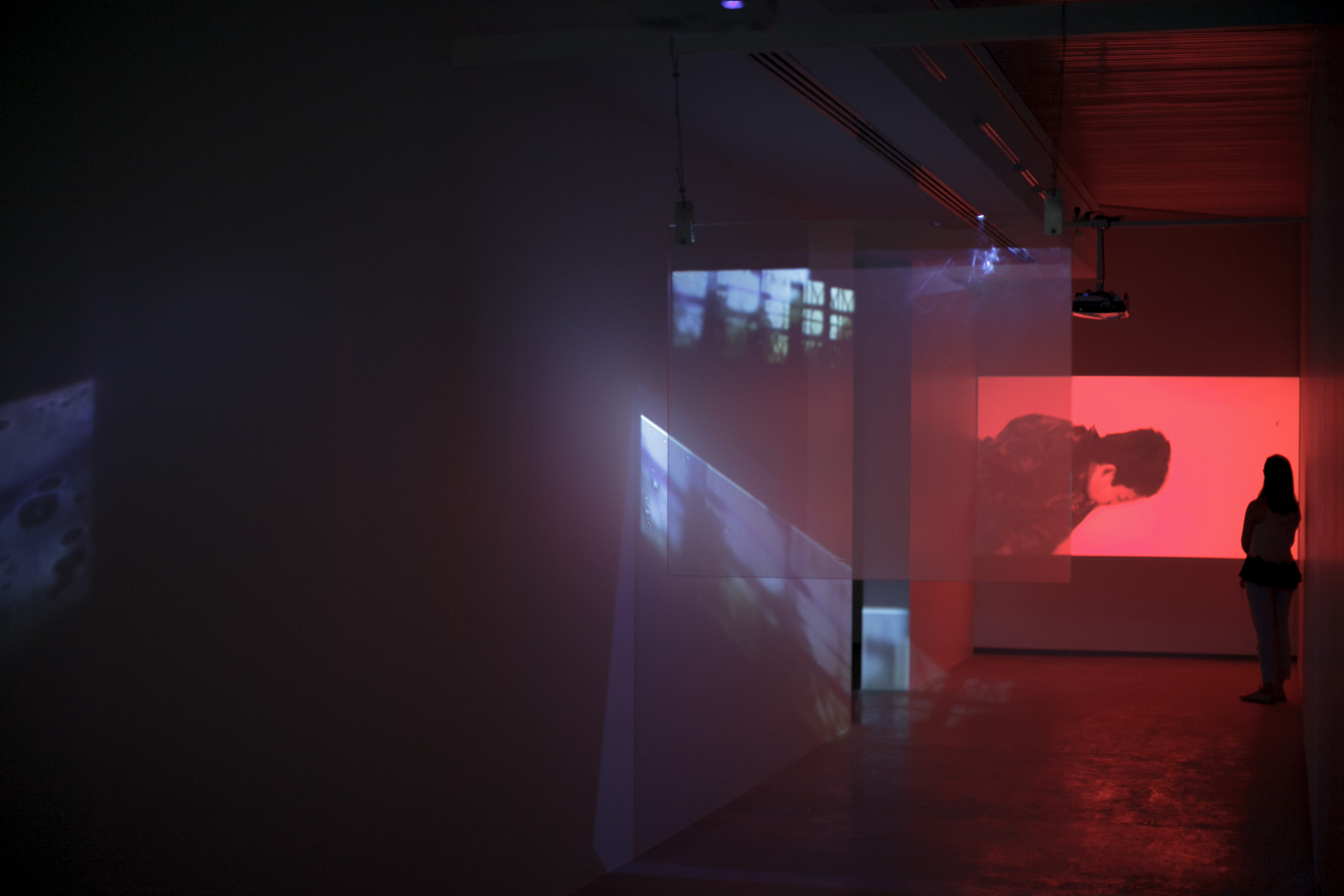
You seem to have a kind of “family of artists,” working with artists over the long term. I am thinking of your relationship with Apichatpong Weerasethakul, whose exhibition “Apichatpong Weerasethakul: The Serenity of Madness” (2016–2020) has been touring in many cities. Can you describe this artist-curator relationship?
Sometimes I cannot resist a proposal from outside institutions, especially with an artist like Apichatpong, who is like my brother, comrade, partner-in-crime, and cofounder of Project 304. I agreed to curate and launch this solo at MAIIAM, Chiang Mai. Our relationship is very personal, and we selected the works together. In the beginning, I wanted to focus on his working process, from making super 8 films, to 16mm, feature films and video art, as well as his archives, background, and childhood photos. To that, he said, “P Jeab, I’m not dead yet, I’m still alive. This sounds like a retrospective and posthumous show to me.” We laughed so hard about his remarks. However, I always provide artists the freedom to decide on the exhibition’s ambiance, spatial design, and curatorial methods, so long as we agree on the works’ selection and layout. Apichatpong is very good at creating circulation and atmosphere since he was trained as an architect. It helps a lot to make the show more interesting and turn it into a memorable visual experience.
In brief, I work with trustable artists who are willing to take risks to develop new works with efficiency and limited resources in new contexts, sites, or projects.
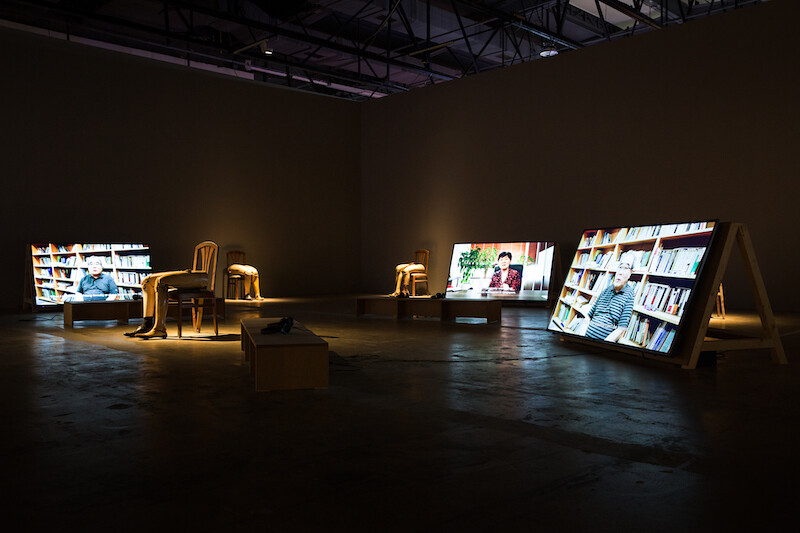
For “Imagined Borders,” the 12th Gwangju Biennale (2018), you curated the main hall on the theme “Facing Phantom Borders.” It notably featured the very rich two-hour-long video Shifting Borders (2018) by Kader Attia. How much time do you expect viewers to spend watching a video in the framework of a Biennale?
In order to enable visitors to spend as much time with the works as possible, I like to work with time-based media that requires the audience to concentrate. Many pieces from this section of “Facing Phantom Borders” were relatively short, but the total duration of all the works being shown reached almost five hours. As someone who grew up in cinema houses and spent a day and a half watching films, my relationship with film and moving images differs greatly from others. I want to share that kind of experience with visitors. Kader’s work in Gwangju was very special for us since our main target audiences were Gwangju and Korean people who were part of that traumatic history. Sunjung Kim, the president of GB Foundation, later told me that many locals revisited this work and cried. In short, the subject and contexts matter: the length isn't an issue if the works are relevant to the locals.
With the last Documenta, we have seen how challenging it could be to experiment with other modes of interacting with art and organizing large-scale exhibitions. What do you think of “communing” in curatorial practice? What could we learn from what happened?
Working with a large-scale show in a divergent context is already hard enough, but the controversies and discourse surrounding the last Documenta were quite unexpected. I like how ruangrupa applied the lumbung concept in the heart of a European town, how they expanded the networks of artists and community, and how they tried to make “useful” projects that can be relevant and beneficial to artists, agencies, and to the locals and their hometown community. The set conditions and mission were already impossible to fulfill and accomplish. This method, for me, was the best lesson that we should learn from. On the other hand, we also realized that prejudices, miscommunication, and bureaucracy exist everywhere.
More generally, is there still a need to invent renewed modes of approaching and curating art? If you had no constraints, what would be your ideal exhibition like?
A new curatorial model is unnecessary because context and site should always be prioritized. Working with a white cube is very difficult without thinking about what is outside, where it is situated, and who we are talking to. If I had a chance to do something without any constraints, I would like to realize my unfinished project that I promised to some of my artist mentors, who have since passed away. It is about the river in my hometown, which I want to use as a production site and departure point to connect with other regions. The project likely results in a research-based work that collaborates with local, regional, and international artists, curators, and institutions to work, learn, and realize “something” together without any restrictions on format, models, time, and budget.
How much do you aim to locate local Thai practices within the wider context of Southeast Asia or the Global South, and why is it important?
It is important to continue dialogue with the global community, be it regional or the Global South. Depending on your interpretation of local Thai practices, what we did in the 1990s and the Chiang Mai Social Installation through alternative approaches might be a good example. Now, at the Thailand Biennale in Chiang Rai, we combine context-based and alternative approaches to the Western biennale tradition in order to seek translocal connectivity, comparison, and collaboration on multiple levels.
Do you think that everybody should become a researcher, or, like Indian American anthropologist Arjun Appadurai, that research should be considered a human right?
While I am unsure if this methodology can apply to everyone, I believe most art practitioners have strategies to incorporate “research” into their artistic process. Many of us were inspired by a mixed method of ethno and anthropological approaches to activism. For example, there was a trend in Thailand during the ‘90s where many NGOs worked with local people in rural areas, especially environmentalists who trained the local community to re-examine their own history. One highly unique and interesting project came from the villagers of Ubon Ratchathani, whose livelihoods were threatened by dam construction. The villagers did collective research on the river to investigate and document the biodiversity in that area.
Using research as a methodology for curatorial and artistic practices is very effective, but incorporating the research is another story. A curator’s job should not be highly authoritative and soloistic but as inclusive as possible. Although everyone has a right to create an exhibition, one thus needs some training and knowledge of art history on whatever topics they are interested in.
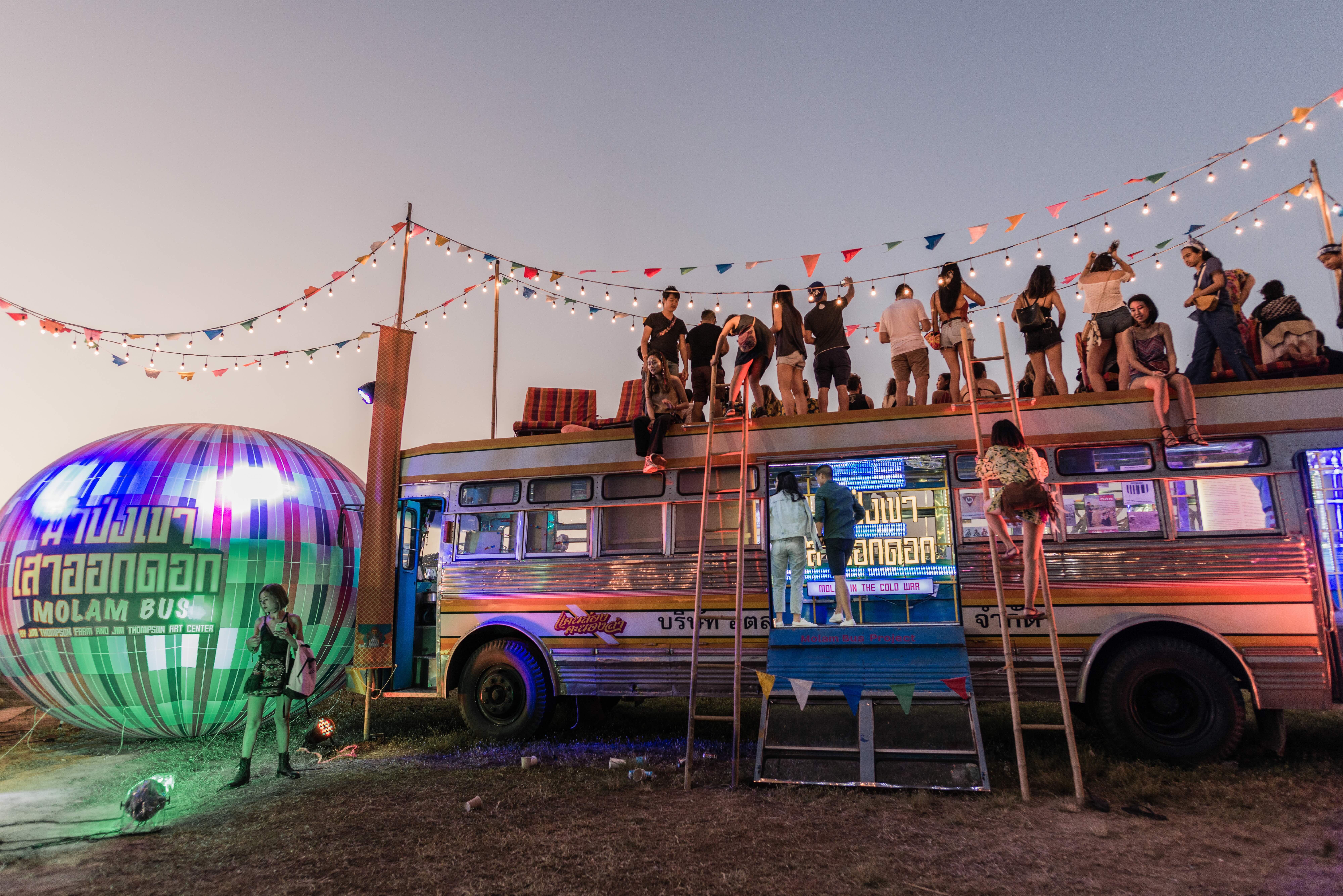
With the “Molam Bus,” you experimented with a mobile mode of exhibitions dedicated to mor lam (also known as molam), a traditional folk music of Isan in Northern Thailand. For you, was it a way to give more exposure and credibility to a popular element of Thai culture? And to democratize art?
It is unnecessary to do that for molam, because it is already popular among the locals and has also become part of the “world music” genre. This project actually started as a conservation of the Isan intangible cultural heritage which was initiated by Jim Thompson Farm. We were asked to manage this project to develop the plan for the Molam Museum. This project serves as the conservation, preservation, research, and exhibition of this culture. The idea of the mobile bus came much later because we could not realize the museum project, so that’s why we shifted and transferred the exhibition and the museum idea into the Molam Mobile Bus project. I was inspired by how molam culture works, how the performers connect by going to the audience with their caravans of ten buses and performing almost every night around the country, except during the Buddhist Lent period. Since they never wait for the audience passively, making a Molam Museum would be very difficult to attract visitors, as most people in Thailand do not visit museums regularly. So, we reach out to the audience instead.
We were not promoting the popular music of Thailand because it is already popular in itself. What we did was try to educate people about molam and to break down the people’s perception toward this kind of music, in which molam has been very popular with Isan people, especially the diaspora in the city. In the past, the genre did not enjoy the same popularity as it does today. Now, many people have started to appreciate this kind of music, because many young, middle-class, urbanite-DJs like Maft Zai have become its main protagonists, championing and promoting molam in the city and abroad. For us, we did the show in the art center, brought them in the Molam bus, took them around the schools, communities and also took them to the WONDERFRUIT Music Festival in Pattaya at its inception. Now it has become their iconic station.
There seem to be many cultural gaps between the various regions in Thailand. As a curator, do you also aim to build bridges between local traditions and cultures?
At Jim Thompson Art Center and with other projects elsewhere, I have been trying to decentralize Bangkok-centric art activities by connecting and re-introducing the cultural exchanges within and outside the country. The cultural gap among diverse regions has existed since internal colonization in the 19th century, like in many other countries. In the last decade, there was actually a fear of the unknown, and especially Islamophobia among the Buddhist community from the north which was problematic. I did a show, “Patani Semasa,” bringing Muslim artists from the deep south of Thailand to show at MAIIAM, Chiang Mai. It was quite interesting to see the reaction because many people from the North knew nothing about this part of the country. Right now, there are many cross-regional art and cultural exchanges among the artists and institutions initiated by artists.
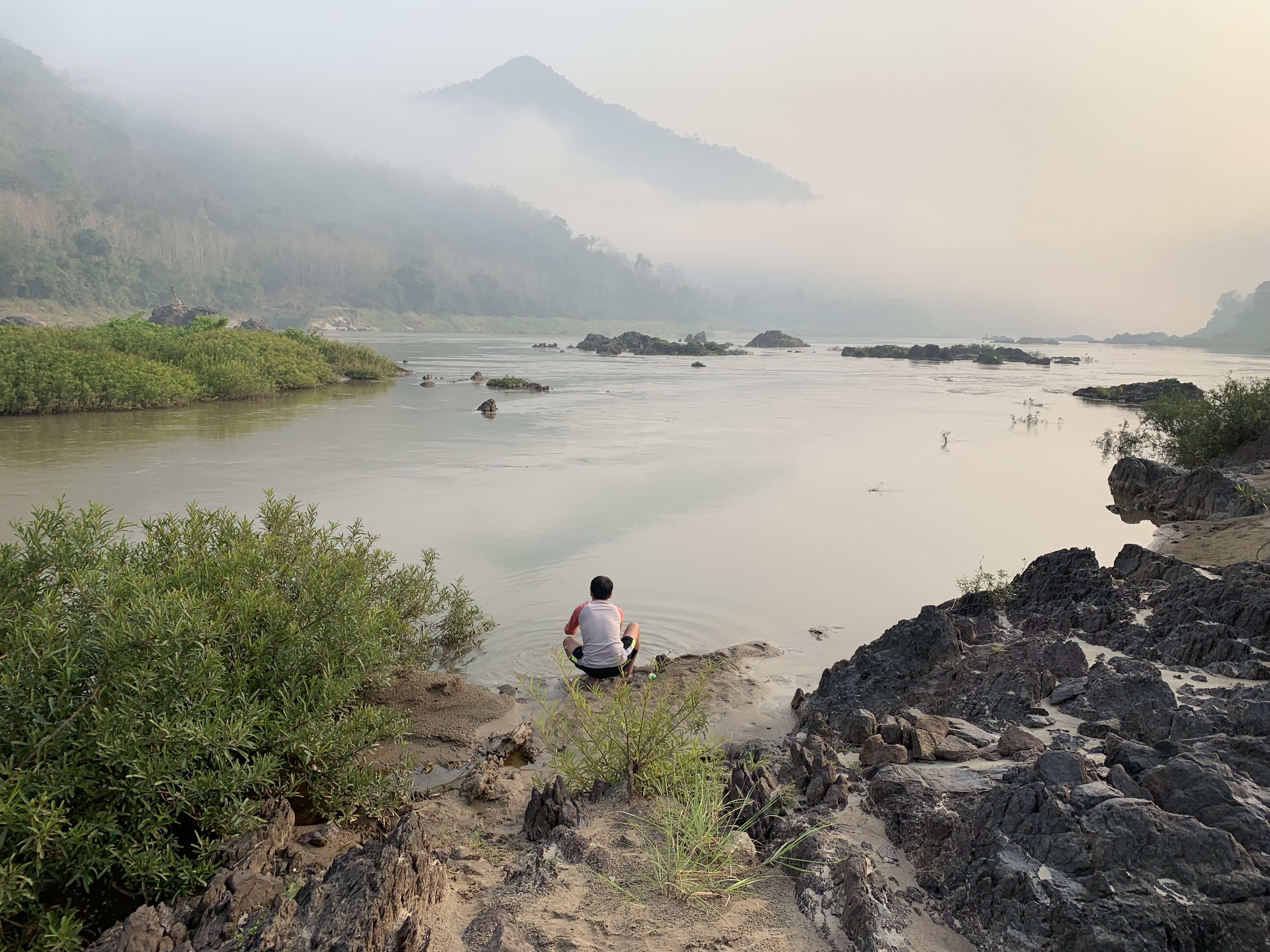
Is this one of the objectives of the 3rd edition of the Thailand Biennale, which takes place in Chiang Rai Province of northern Thailand, your native place?
Yes, and the stakes are very high for us because we are not only putting up an international exhibition but also thinking of capacity building, infrastructure building, and trying to connect Chiang Rai to other cities. Chiang Rai has been an important site of contemporary and traditional art production, and is a contact zone for locals and international visitors. It is about revitalizing this rather sleepy border town to reinvent itself as an artistic city (whatever that means), into a site of art and crafts production in contemporary and traditional art for the global community. It offers unique conditions and allows us to witness the co-existence of time and diversity in arts and culture, including traditions from other countries, such as Laos, Myanmar, and even China, through the Mekong River.
Reaching out to a larger audience and interacting with different groups of audience is also one of the objectives of your curatorial practice. How do you plan to open up the exhibition to more people and engage with different communities?
We create multiple models for people to get involved, not only a main show of a so-called Biennale. Different models like pavilions, collateral events, and artist studio openings allow people to enjoy themselves on different levels. Besides, there are many more special events with music, film, and performing arts over the five months, so that each month we can attract both local and regional visitors. The Biennale is conceived more like an experimental trip, not only focusing on art but opening to lifestyle, craft, and various places such as local restaurants. Rirkrit is very famous for food, and I am also a foodie, so we will try to give you the best recommendations.
Rirkrit Tiravanija is indeed co-curating the project. It is not the first time you have worked together (even if “Saigon Open City” happened a long time ago): how do you collaborate?
It was natural to team up with Rirkrit for this project, because we want to revive what we did in Vietnam. We are lucky to have other curators on our team—Angkrit is a local artist and curator, a native of Chiang Rai, and Manuporn, who has been working with Southeast Asian artists for a long time. Our work is area-based, which functions well with artists from different regions around the world. The nature of the show is site specific, so we invited about 50 percent of artists to do site visits. Most of the projects are also newly commissioned and site-specific in nature.
Why did you choose the theme “Open World”?
The theme of “Open World” takes its name from the Buddha image representing wisdom and awakening. It is enshrined in Wat Pa Sak, a 13th-century temple located in a small town on the Mekong River, near Laos and Myanmar. The show will be the departure point for participating artists, from the Mekong to the Amazon and beyond, to manifest the entanglements of tradition, mythology, animism, geopolitics, and ecology, as well as the history of art and craft, and question how we can imagine the possibility of a better future.
Caroline Ha Thuc is a writer, researcher and curator based in Hong Kong.


